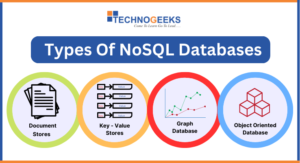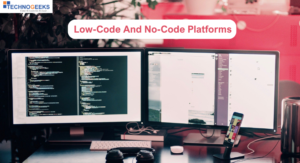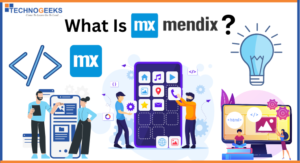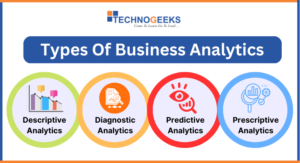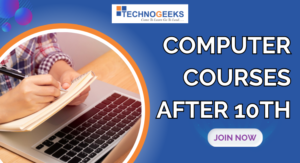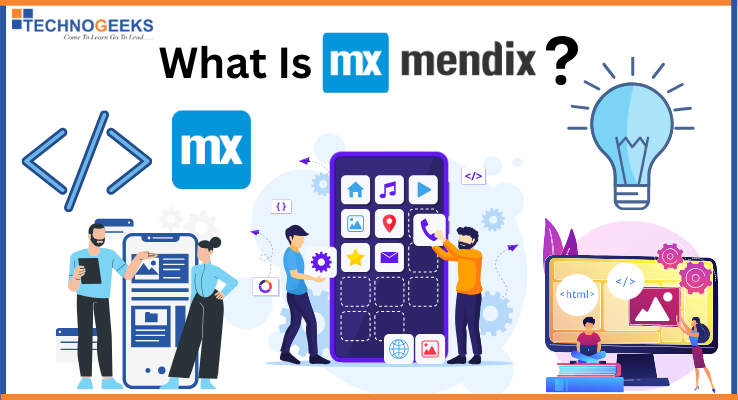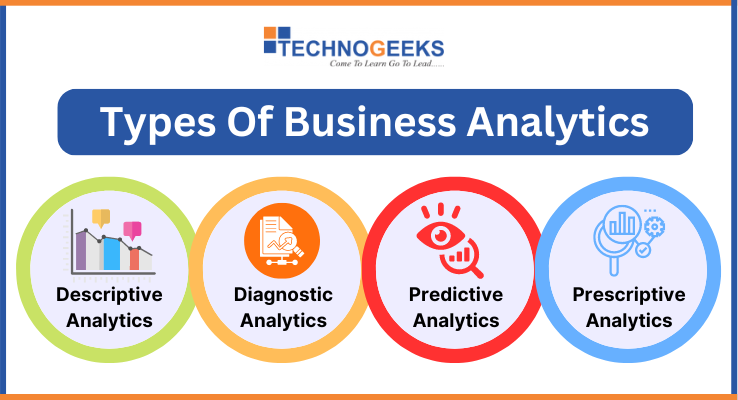Table of Contents
ToggleMERN Stack – A beginner’s guide to Developing Web Apps with MERN Stack
Do you know that, according to Indeed.com, the average MERN stack developer salary in the US is 120,000$ per year, and it can go up to 200,000$ per year?
This blog article will be a basic understanding on the MERN stack for 2023. Starting from the basics to the advanced topics, we will start this full course with React, which is a front-end development tool for creating web applications.
The MERN stack is a powerful blend of:
- MongoDB:- a NoSQL database.
- Express.js: a web framework
- React.JS: a UI-building JavaScript library
- Node.JS: a server-side JavaScript environment
Together, they make a system for building web apps that properly work & are very flexible.
Why choose the MERN stack?
Many benefits lure software developers to the MERN stack.
The massive developer community that has sprung up around JavaScript makes it much simpler to locate relevant materials and get assistance when needed.
Second, client and server apps may utilize JavaScript. We can use MERN during software development.
Having fewer languages and frameworks to master and implement streamlines the development process. The NoSQL database MongoDB is used in the MERN stack as well, providing scalability and flexibility when dealing with enormous data sets.
Last but not least, applications developed with the MERN stack are guaranteed to be quick and responsive because of its reputation for speed and efficiency.
Articles about React:-
Understanding the components of the MERN stack
In order to become proficient with the MERN stack, a complete familiarity with all of its parts is required.
MongoDB is a popular document-oriented database because it stores data in a flexible style similar to JSON. It’s straightforward to integrate with the rest of the stack and offers scalability.
Server-side web application platform Express.js is versatile and simple to use.
Component-based architecture encourages code modularity and reusability. With its event-driven, non-blocking design, it can process several requests simultaneously with little impact on performance.
If you learn each of these parts, you’ll be able to use the MERN stack to create full-fledged web apps.
Setting up the development environment for the MERN stack
- Node.js and npm Installation: Begin by installing Node.js, which includes npm for managing project dependencies.
- MongoDB Setup:- Install MongoDB to store and retrieve data for your applications.
- Code Editor Installation:- Choose a code editor like Visual Studio Code, equipped with features for code writing and debugging.
- Development Environment Ready:- With these components in place, your development environment is set up.
You’re now prepared to start building MERN (MongoDB, Express.js, React, Node.js) applications.
Prerequisites to learn MERN Stack
If you are a collage graduate and want to be a MERN stack developer, then read this section carefully. The prerequisites for learning the MERN stack are:
HTML and CSS:
- Fundamental for structuring web pages and styling them.
- Understanding HTML for page structure and CSS for styling is essential.
JavaScript:
- The core programming language of the MERN stack.
- Basics of JavaScript, including variables, functions, loops, and objects, are necessary.
Node.js:-
- basics of Node.js to make and run web apps.
- Node.js enables running JavaScript on servers.
If you have a strong foundation in HTML, CSS, and JavaScript, you’re well-prepared to begin learning the MERN stack.
Building a basic MERN Stack application – step by step guide
Step 1:- Create a Project Folder
Start by creating a new project folder where you’ll build your MERN Stack application. Give it a name (whatever you like!).
Step 2:- Initialize Node.js Project
Open your terminal > navigate to the project folder > and initialize it as a Node.js project using npm (Node Package Manager). Run the following command:
This command creates (with the default settings) a “package.json” file.
Step 3:- Install Dependencies
Install the necessary dependencies for your MERN stack application. You’ll need Express.js, React.js, MongoDB and many other required packages. Run the following commands:
Step 4:- Server-side Setup
In your project’s root folder > create a server file (e.g., server.js) > and set up your Express.js server. Here’s a basic example:
Step 5:- Client-side Setup
In the client folder, you’ll find the React.js application created by create-react-app. You can create React components, set up routes using React Router, and make API calls using Axios within the client-side application.
Step 6:- Build Your App
Start building your app by making React components, setting routes and adding features on both the server and client sides.
You can organize your code into components, handle user authentication, and interact with the MongoDB database as needed.
Step 7:- Testing
Test your application properly and thoroughly and make suer it properly works. You can use tools like Postman or the browser’s developer tools for API testing, and you can manually test the client-side functionality.
Step 8:- Deployment
Once your MERN application is complete and tested, you can deploy it to a hosting platform of your choice. Common options include Heroku, AWS, Netlify, and Vercel. Make sure to set up the necessary environment variables and configurations for deployment.
Step 9:- Monitor and Maintain
After deploying your app, monitor its performance and address any issues. Logs & issue management may simplify maintenance.
Advanced MERN development techniques and best practices
- Modular Project Structure: Organize your project into modular components for better organization and maintainability.
- Authentication and Authorization: Implement robust authentication and authorization mechanisms to secure your applications and manage user access.
- State Management: Use state management libraries like Redux or MobX to efficiently manage the state of your React components.
- Server-Side Rendering (SSR): Implement SSR to enhance application performance and SEO-friendliness.
- Testing Frameworks:- Learn about testing frameworks and methodologies to ensure code quality and reliability.
You can make complicated and high-quality MERN applications that are organized, safe, efficient, and well-tested by using these advanced methods and best practices.
Useful resources for learning and mastering the MERN stack
There are many resources out there to learn the MERN stack. But one can get confused while choosing them. Consider the following points when choosing the best resources:
- Online Courses and Tutorials: Gain theoretical knowledge and practical experience through online courses and tutorials like Technogeeks’ MERN stack full stack developer course.
- Articles and Lessons:- Explore articles and lessons by experienced developers on platforms like Medium and Dev.to.
- Online Groups and Forums: Participate in developer-focused online groups and forums for idea exchange and peer feedback.
- Official Documentation and Guides: Dive into the documentation and official guides of MERN stack components to understand their features and capabilities.
- Continuous Learning:- Stay updated with the latest MERN development trends and breakthroughs by continually studying and exploring new materials.
Common challenges and how to overcome them in MERN development
- Handling Asynchronous Operations in Node.js:
- Challenge: Async operations can lead to callback hell or nested code.
- Solution: Use promises or async/await for cleaner and more readable code.
- State Management in React:
- Challenge: Managing state, especially in large-scale apps, can be complex.
- Solution:- Utilize state management libraries like Redux or MobX to handle complex state requirements and reduce code complexity.
- Debugging and Troubleshooting:
- Challenge: Identifying and fixing issues in complex MERN applications can be challenging.
- Solution:- Use development tools and debugging techniques to simplify the debugging process and address issues efficiently.
MERN stack developer job opportunities and salary prospects
The MERN stack is a very popular technology that is currently in use for building web apps. It consists of all the open source technologies: MongoDB, Express, React.JS and Node.JS.
This is why MERN stack developers’ demand is constantly growing. In India, the average MERN stack developer salary is around 3.6 lakh per year. This can vary depending on the company, the developer’s experience, and their skills.
Conclusion
- Rewarding Journey: Learning the MERN stack opens exciting web development opportunities.
- Key Steps: Understand components, set up environment, build applications.
- Proficiency: Acquire skills to become a proficient MERN stack developer.
- Excellence:- Adopt advanced techniques, stay updated, and overcome challenges to excel.
- Career Growth:- Embrace the journey for career advancement in web development.




